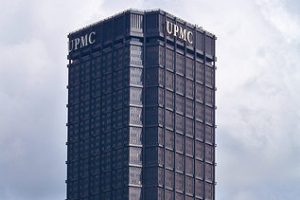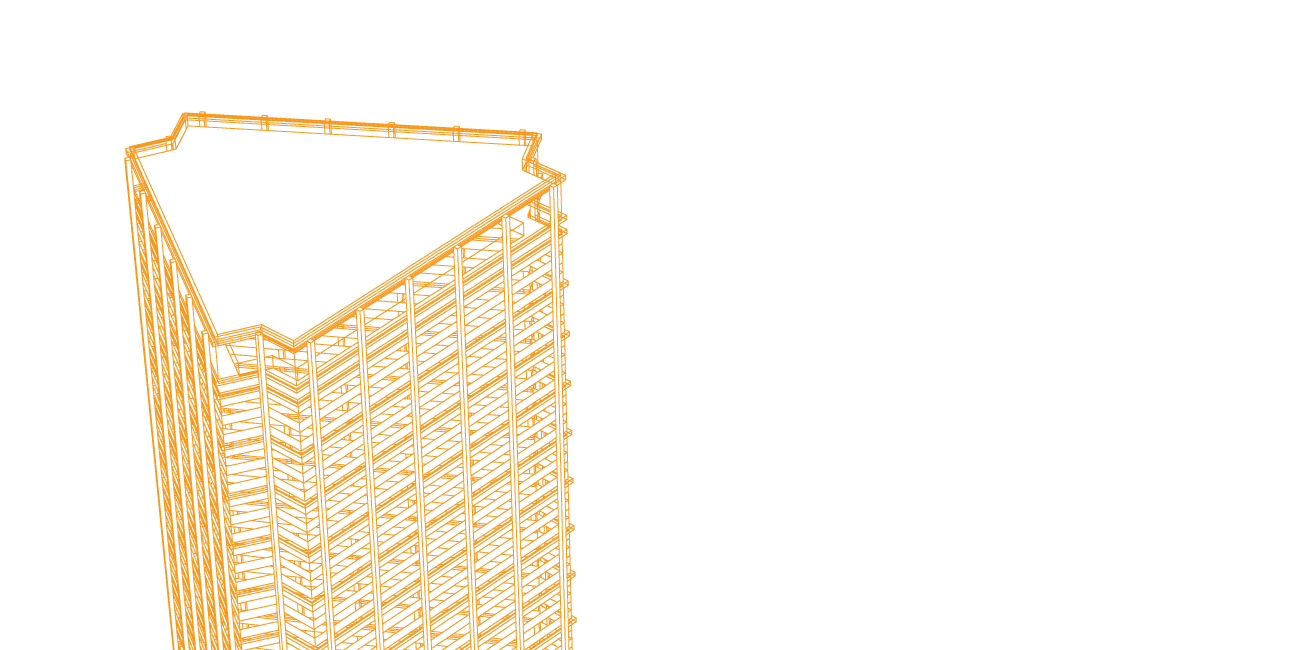A New Milestone for the U.S. Steel Tower
evolveEA has managed the recent LEED Gold certification of four UPMC Health Plan floors at U.S. Steel Tower. This milestone now creates 27 LEED certified floors in the Tower since 2007, half of the Tower’s 54 office floors.
Working with UPMC at Steel Tower since 2007, evolve has managed the sustainability efforts for the renovations of 27 separate floors, starting with LEED for Commercial Interiors version 2.0, then 2009 and now v4. This has been a process of evolution and refinement with the core team of The Design Alliance as architect, Allen & Shariff as MEP engineer and evolveEA as sustainability consultant throughout. Strategies such as controllable LED lighting, demountable partitions, occupancy sensors and other strategies were innovative at first and adopted over the course of over a dozen projects. The energy efficiency measures employed also contributed to the inverse curve of building energy consumption decreasing as building occupancy increased.
 Already the largest building between Philadelphia and Chicago with 2.6 million square feet, the 64-story U.S. Steel Tower has been an iconic fixture in Pittsburgh PA’s skyline for half a century. When the U.S. Steel Tower was designed and built (1970), resource efficiency was not an expectation. But occupant health and resource conservation are key concerns for the Tower’s largest tenant, UPMC, and their goals present many synergies with Winthrop Management and other tenants, setting the tone for updating building standards and leveraging building improvements.
Already the largest building between Philadelphia and Chicago with 2.6 million square feet, the 64-story U.S. Steel Tower has been an iconic fixture in Pittsburgh PA’s skyline for half a century. When the U.S. Steel Tower was designed and built (1970), resource efficiency was not an expectation. But occupant health and resource conservation are key concerns for the Tower’s largest tenant, UPMC, and their goals present many synergies with Winthrop Management and other tenants, setting the tone for updating building standards and leveraging building improvements.
The office tower is managed by Winthrop Management, who has been working with evolveEA since 2013 to incrementally retrofit systems and improve operations. Thanks to years of investment by Winthrop and their tenants, the building is a leading partner in the Pittsburgh 2030 District, a program encouraging existing buildings to target a 50% reduction in energy use by the year 2030. The U.S. Steel Tower makes up 5% of Pittsburgh’s downtown office space in built square footage.
After achieving BOMA 360 certification and three consecutive years of Energy Star certification (2016 – 2018), Winthrop worked with evolveEA to achieve a LEED V4 Silver Certification under the Operations + Maintenance (O+M): Existing Buildings rating system. One of the most unique aspects of this effort has been the Tenant Sustainability Committee created by Winthrop with help from evolveEA, which meets quarterly to collaborate to discuss green initiatives for the whole building, with tenants and management leveraging each other’s efforts.
The U.S. Steel Tower LEED Silver O+M certification achieved in 2019 included:
Location & Transportation: Support for alternative modes of transportation, including secure bicycle parking, electric vehicle charging stations, and ride share matching. Approximately 60% of the employees that work at the USS Tower commute using alternative modes of transportation.
Sustainable Sites: Site management practices that reduce harmful chemical use, energy waste, water waste, air pollution, solid waste, and chemical runoff.
Water Efficiency: Fixture and fitting upgrades, water sub-metering, increased cooling tower water cycles, and drip irrigation for the landscape. The USS Tower reduced building water consumption by 27% from 2016 to 2018.
Energy & Atmosphere: Installation of highly efficient LEDs in the lobby and garage, installation of Variable Frequency Drives (VFDs), HVAC upgrades, and new energy-efficient elevator system, and existing building commissioning, resulting in Energy Star certification from 2016 to present.
Materials & Resources: The building purchased sustainable products and increased the building’s recycling rate. Additionally, the sustainable purchasing and recycling practices associated with the four UPMC floors that are currently pursuing LEED for Commercial Interiors, contributed significantly in this category.
Indoor Environmental Quality: Green cleaning practices, products, and equipment that improve human health, reduce impact on the environment, and provide a clean workspace for all tenants. Winthrop also performed a custodial effectiveness assessment, implements enhanced indoor air quality strategies, and practices green integrated pest management.
NOTE:
On October 19, 2020, an article noting the energy performance of various Pittsburgh buildings was published by PublicSource.
The article refers to U.S. Steel Tower as the largest building in Pittsburgh, 70% larger in square footage than the next largest building, the BNY Mellon Center.
An ensuing graphic in the article shows Steel Tower as the fourth largest emitter in the City, the only building in the top six emitters that is not a hospital.
This in no way implies that the Steel Tower is inefficient. On the contrary, it is a large emitter because it is a large building — practically a city with 10,000 occupants on a typical day.
We applaud PublicSource for publishing this data, which is a function of our mandatory disclosure laws that many of us fought hard to realize, but would wish for more clarity in the article.
The O+M: Existing Buildings LEED Certification requires projects to recertify every five years (or as frequently as every year). This approach encourages cyclical improvements to the building’s environmental footprint, which Winthrop Management and their partners are well-positioned to take on for the long term. Their Tenant Sustainability Committee meets regularly, and ongoing engagement in the Pittsburgh 2030 District will continue to push the building’s performance toward increasingly ambitious targets for energy and water efficiency, indoor air quality, and low-impact transportation.


